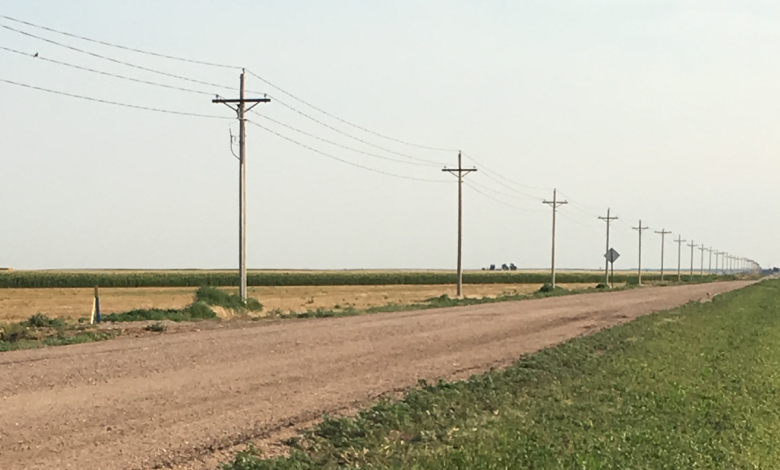How to Close the Gap in Rural internet Once and For All
Unlimited wireless internet for rural areas.

How to Close the Gap of unlimited wireless internet for rural areas. Once and For All Despite years of work and ten billion dollars in subsidies. The US still has a persistent rural-urban broadband divide. It’s past time for a change. Congress should take advantage of the chance to make a significant. One-time investment in rural broadband infrastructure as part of either. An overall infrastructure investment package or separate rural broadband legislation.
If adequately targeted and distributed via reverse auctions. A large infusion of finance might assist extend the footprint of current networks and support new installations in previously uneconomical to serve regions, bridging the rural-urban digital divide.
THE UNIVERSAL SERVICE’S HISTORY INCLUDES LESSONS FOR THE FUTURE.
For nearly a century, universal service has been a cornerstone of communications policy. The creation of the former AT&T monopoly aided the widespread deployment of telephone services in the past. 3 Different networks battled for extensive area coverage. In the early days of competition amongst separate, non-interconnected telephone networks.
The historic 1913 “Kingsbury Commitment” permitted. The Bell system to continue without fear of antitrust action if it networked with independent enterprises. Accepted regulatory monitoring and worked toward universal service. Near the turn of the century, Theodore Vail, AT&T’s president for almost 15 years, established what would become the Bell system’s philosophy for decades: “One System—One Policy—Universal Service.”
The Willis-Graham Act of 1921 essentially established AT&T as a natural monopoly, claiming that “local competition in the telephone sector brings nothing to the table.” 4
Efforts to expand the telephone network’s coverage continued throughout the twentieth century. The Bell system could cross-subsidize as a monopoly service. Utilizing income from high-return services in urban areas (such as business and long-distance) to fund high-cost deployment and low-margin services. After the 1996 Telecommunications Act, which promoted the formation of a more competitive environment. Which was finally realized via technical innovation, the system began to fall.
We can’t depend on the Bell system’s old, implicit cross-subsidies to deliver ubiquitous broadband. Instead, to address this market failure. Explicit subsidies must be implemented.
TECHNOLOGIES FOR NETWORK ACCESS
There are several extant network access technologies, each with its own set of benefits and drawbacks. For negotiating rural broadband policy. An essential awareness of current deployments, the performance capabilities of various technologies. And the potential build-out of new technology is helpful.
Digital Subscriber Line (DSL)
DSL providers use the network developed for telephone services. One of the various significant benefits of this access method is its extensive infrastructure footprint. The underlying infrastructure used by DSL is the most widely deployed. Thanks to a century of attempts to attain universal telephone availability.
However, since the network was created for voice conversations. It has trouble transferring vast amounts of data, especially over long distances. The old copper network is use by various technologies. Including asymmetric DSL (ADSL), vectored DSL (VDSL), and G fast—which can attain gigabit speeds. At least over a short distance.
These DSL varieties are widely accessible and provide excellent performance in heavily populated locations. However, in rural America, where loop lengths are extensive, performance suffers and becomes rather sluggish. 5 To attain higher speeds, fiber is being extended more profoundly into the network today. With the old copper telephone network providing service to the final mile to the house.
Hybrid Fiber-Coaxial (HFC)
HFC is the cable industry’s technology. The creation of Data Over Cable Service Interface Specifications (DOCSIS). Allows for the Internet to be added to a system initially designed to deliver television service. Cable networks were already widely deployed in this TV-loving nation by the time internet got here. Thanks to municipal and state-level franchise agreements. That allowed video providers access to local rights of way in return for massive build-outs (and extra restrictions).
And unlike DSL, wire networks may be upgraded at a reasonable cost. Cable, like DSL, is now a combination of fiber and coaxial cable. To boost performance, the thread is come closer to dwellings. According to industry estimates, almost 90% of American homes have access to a cable network.
Fiber Optic Cable
Optical Fiber connections employ lasers to reflect light through tiny glass tubes and in the Internet’s highest-throughput areas. Long-distance data transmission networks use fiber optics. Fiber is a new technology that does not have the same extensive last-mile deployment as DSL or HFC. However, it provides the best long-distance performance for new construction, is easily upgradeable, and has minimal operating costs.
Choosing between the many types of fiber networks. Fiber-to-the-node, fiber-to-the-cabinet, fiber-to-the-basement, and fiber-to-the-home. Is based on how near the network is to the subscriber’s house. With each offering varied top-end performance and deployment costs. Broadband proponents pay a lot of attention to fiber-to-the-home. Because it is the latest and best technology with much more capacity than is necessary. However, it is also the most costly to implement.
Fixed Wireless
WISPs provide Internet service to end-users through a fixed wireless connection over the last few hundred or thousand feet. Wireless networking may be a highly cost-effective way to expand a network. And it’s especially beneficial in rural locations with rugged terrain.
Satellite
Satellite networks have long provided a backup broadband service accessible almost everywhere but had specific performance and cost limits. Traditional satellite services employ large geosynchronous satellites. Satellites orbit at the same pace as the Earth spins at a distance of roughly 22,000 miles from the surface. Making the service considerably simpler to maintain.
However, since information must go up to space and back down when users surf the web. This is a long-distance for an Internet signal to travel over the air. And the service suffers from significant latency or delay. Recent initiatives to employ Low Earth Orbit (LEO) satellites are creating a lot of buzzes. Since bringing them closer to the ground allows for better performance with less latency.
Importantly, satellites have an entirely different architecture than terrestrial services. Which means that a geographic-specific subsidy structure may not be the most efficient approach to promote rural satellite access. Subsidies to end-users for service, up-front customer-premises equipment. Or both would almost certainly be more effective than funding satellite operators to serve specific locations.
Mobile
While mobile technologies 4G LTE released. 5G offer Internet connectivity, capacity constraints prevent it from home use broadband alternative. However, this is changing since many cellular carriers are now offering residential broadband. Comparable to the fixed service provided by WISPs. Because mobile network coverage offers significant economic advantages outside of the house. Efforts to expand and enhance networks in rural America should include support for mobile technology in addition to home connection.



